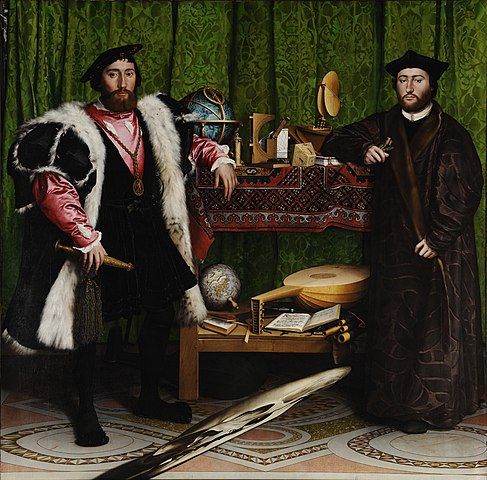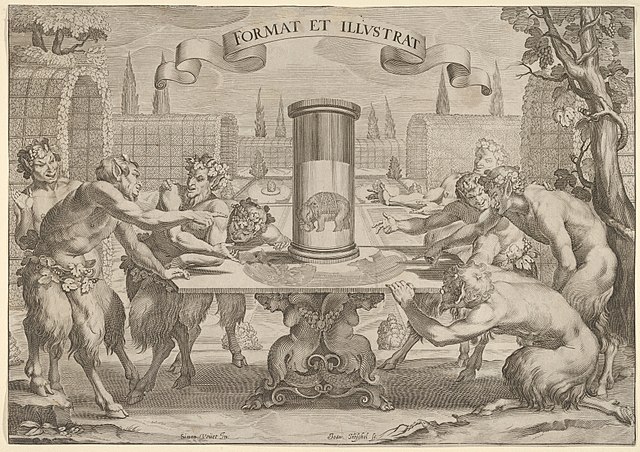Anamorphoses
Anamorphoses are optical gimmicks whose origin goes back several centuries. They are images that are distorted to such an extent that they can only be recognized again as an undistorted image from a certain angle or with the help of aids.

You may be familiar with the distorted skull in Hans Hohlbein’s 1533 painting The Ambassadors, which can only be seen in the correct proportions from a very shallow angle.
Hans Hohlbein, The Ambassadors, 1533, National Gallery London, Wikimedia
More modern examples can be found today in the artistic 3D street paintings (e.g. by Julian Beever), or in sober traffic information painted on the ground (e.g. the lettering ‘STOP’), which are distorted in such a way that they appear normal again from the perspective of the car or bicycle driver.


Cylindrical mirror anamorphoses are distorted images that can only be seen correctly by looking into a cylindrical mirror. The image of fauns marveling at the anamorphosis of an elephant in such a mirror dates from the early 17th century.
Simon Vouet and Hans Troschel, Metropolitain Museum of Art, Wikimedia.
Such gimmicks became really popular in the 18th century. Other mirror shapes were then also taken to help, for example, cone and pyramid mirrors.
Anamorphoses were often used to disguise things and pose riddles. It is precisely this that makes them so exciting even for us today. No wonder, even today there are still buy anamorphosis sets for amazement, play and experimentation.
